This is one in a series of posts on the Fujifilm GFX 100S. You should be able to find all the posts about that camera in the Category List on the right sidebar, below the Articles widget. There’s a drop-down menu there that you can use to get to all the posts in this series; just look for “GFX 100S”.
The 80mm f/1.7 is supposed to be a bokeh monster. I thought I’d take a look.
There are two pieces to bokeh. The first is what things look like when they are well out of focus (OOF), and the second is how the transition from OOF to in-focus happens. The second is complicated, but the first is very simple. What you see when part of the image is well OOF is each point in the image times the OOF point spread function (PSF, in this case, aka bokeh balls). So you can understand what the bokeh in the OOF regions is gonna look like by looking at the OOF PSF across the frame. After you’ve looked at a few of these images that I’m going to show you here, you can see how the deep-OOF bokeh of just about any lens is going to look like with just about any scene.
The technique that I used to obtain the images below is explained here. I made a change for this set of images, which I think is going to be an improvement. I used an Astrozap artificial star for my light source instead of the LED flashlight. The artificial star is a much better approximation to an ideal point source, but it is rather dim. I moved the camera around and captured the PSFs in one quadrant, then mirrored and assembled them in Photoshop. I used a GFX 100S for the captures.
I’ll show you the lower left quadrant, since the PSFs are rotationally symmetric.
What’s that thing in the OOF PSF second from the right in the top row? That, folks, is a dust spot. It looks like a perfectly ordinary dust spot if you stop the lens down to f/22 and aim it at a blue sky, but it looks like waves radiating from a big meteor smacking into a planet here.
I took the above image and flipped it around a bit so you can see what the whole frame would look like:
The blobs are pretty clean, although they do show some onion-ring effects. The mechanical vignetting (cat’s eye) isn’t too bad. In fact, the OOF PSFs look a lot like those from the Fujifilm 110 mm f/2 lens.
The other piece of bokeh is the way the image changes as the focal plane is progressively moved. I put the star in the center of the image and moved the focal plane in 10 micrometer (um) steps for the next composite. The top and left images are front focused, and the bottom and right ones are back focused.
It is striking how much the color changes as the focal plane is moved. This is a lens with a lot of longitudinal chromatic aberration (LoCA).
The captures that were close to in focus above are blown out. Let’s take a look at them, this time moving the focal plane in 5 um steps.
The in-focus shot is quite sharp.
Now we’ll look in the corner, first with 10 um steps:
Oh, my. There are a lot of aberrations.
Close to in focus, with 5 um steps:
Compare these with an excellent, but conventional, zoom.
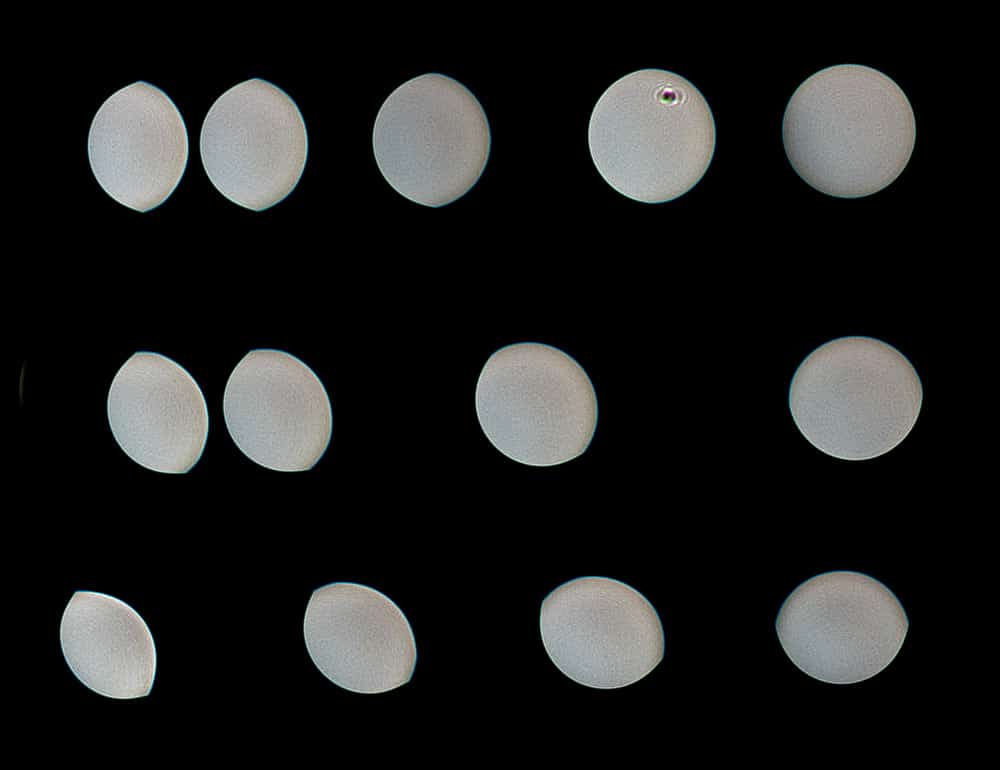
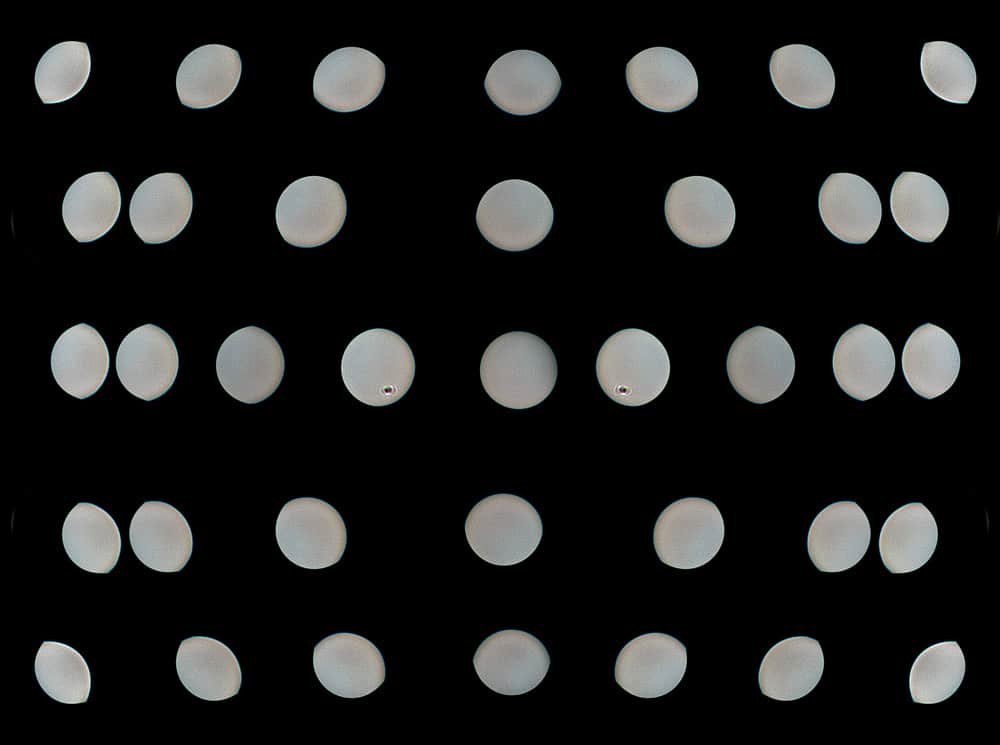

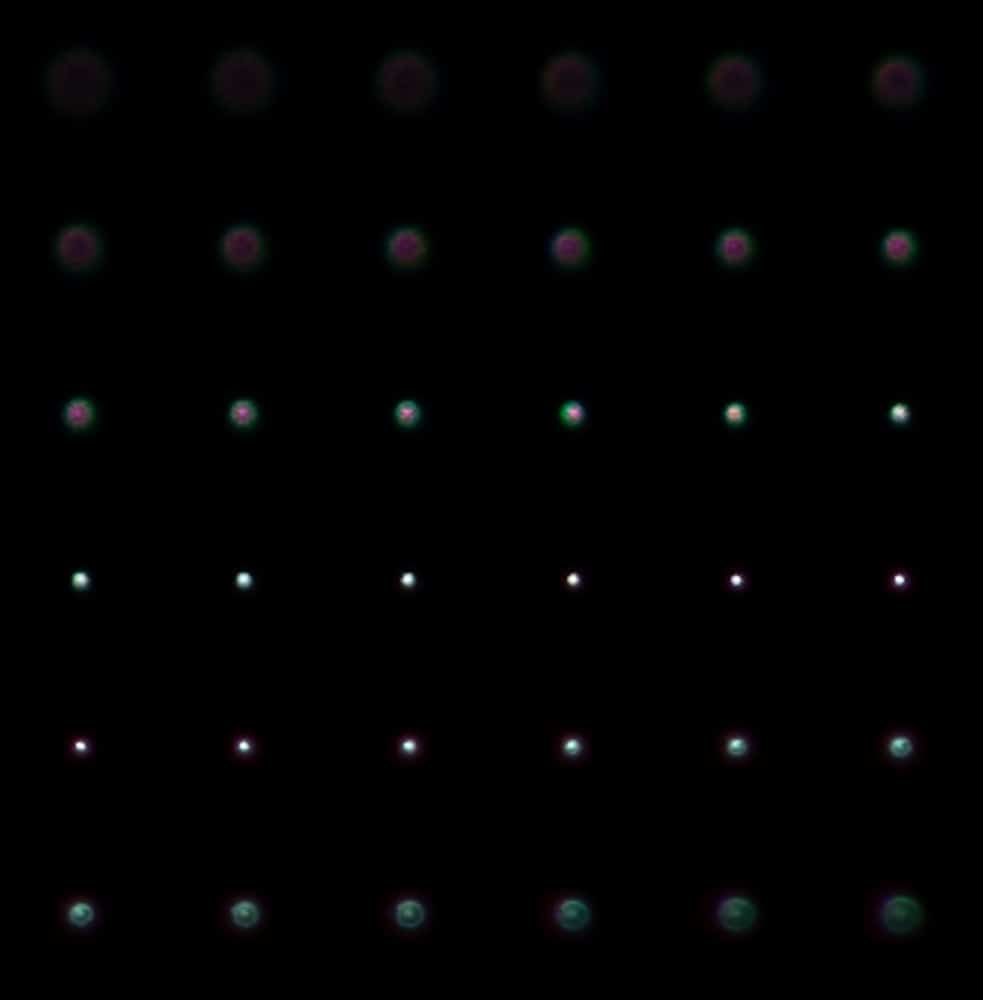
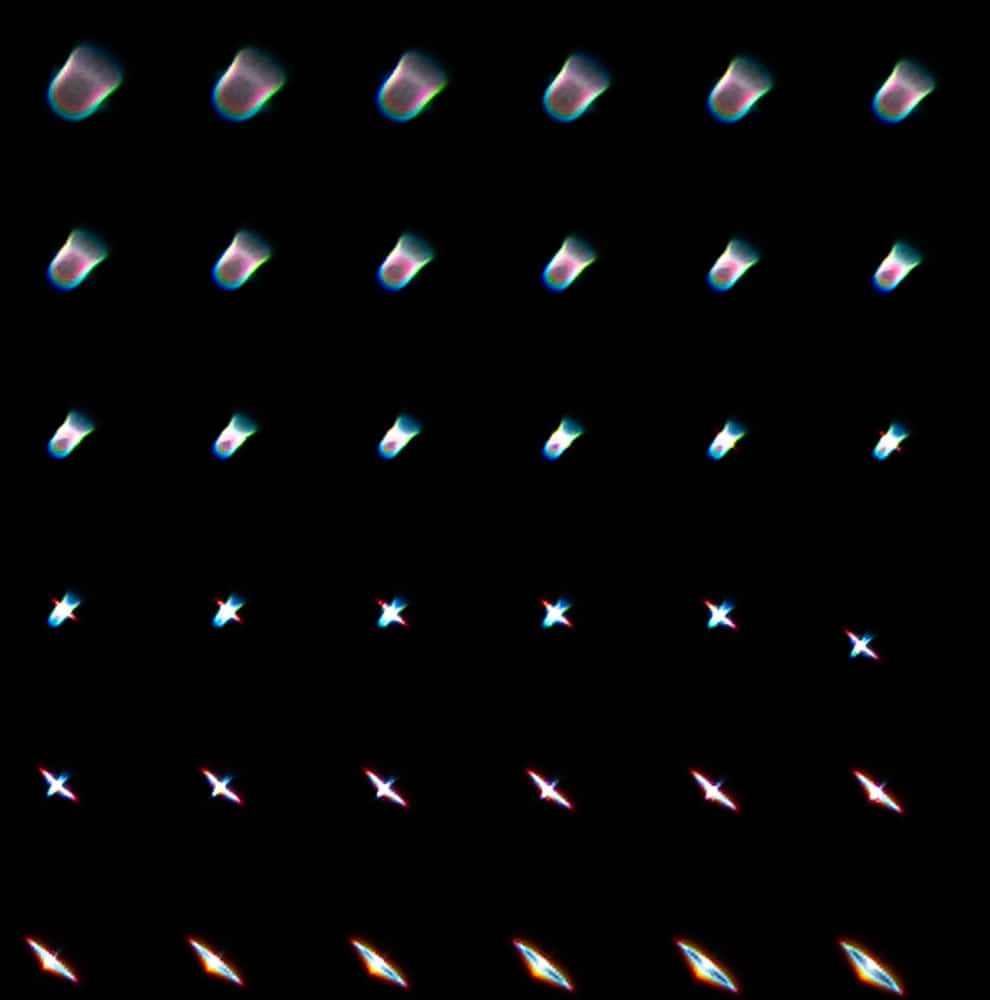
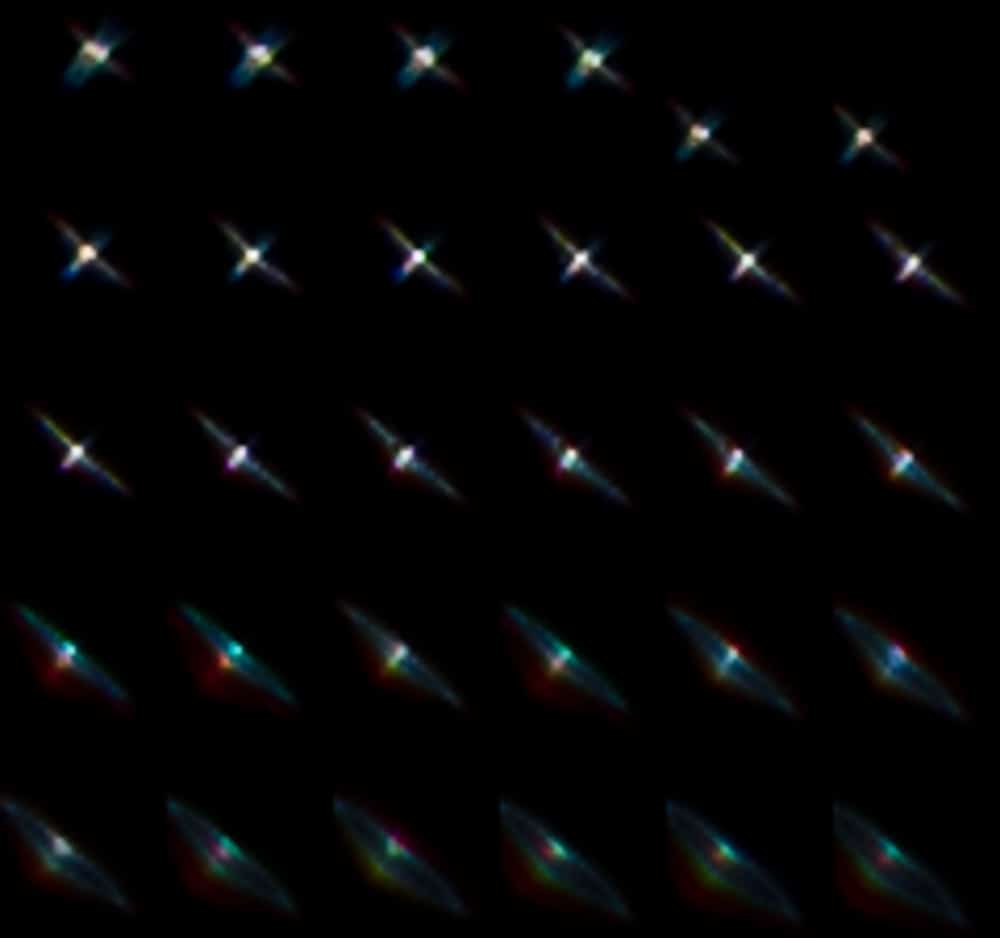
Beautiful captures, Jim, even if they don’t mean the same about the lens’ performance.
FWIW, many of them appear adequately sampled for phase retrieval, so one could measure the aberrations from them directly.
I would welcome your interpretations. I’d be happy to supply you images if you’d like that.
Sure, can you email them to the same as I use on your site?
The dataset I would request is…
F/1.7, F/4, F/8 images through focus. If you can tell me how defocused they are, that’s great. If you can get 8 waves zero-to-peak of defocus, that is about optimal. A total of three PSFs is good. dz = 8 * fno * lambda * defocus is the formula (put in “8” for defocus, or 6, or 4, or pi, or whatever but 8 is about optimal). If you can make the backlight of the artificial star approximately monochromatic, that makes it easiest. If it is super broadband light, that makes the problem pretty untenable (but the bayer filters help reduce that, some). Knowledge of the defocus level trumps exactly 8wv.
If you want to make it trivial, you can also point a macro lens inside the 80mm’s front and take a high res picture of the aperture with a diffuse light source behind the lens (lens off the camera), with a second of a ruler at the same focus of the macro lens to calibrate the plate scale. That would give knowledge of the F/#, which also helps. The F/1.7, F/4, F/8 are “notional” F/#, and might have bad accuracy.
For the PSFs, removing absolutely as much as possible from the background (“black room”) and leaving as much of the extent around the PSF intact (i.e., uncropped) as possible is relatively important. A 500px region around the core is a decent size. Depends how high frequency you want to know things about the aberrations.